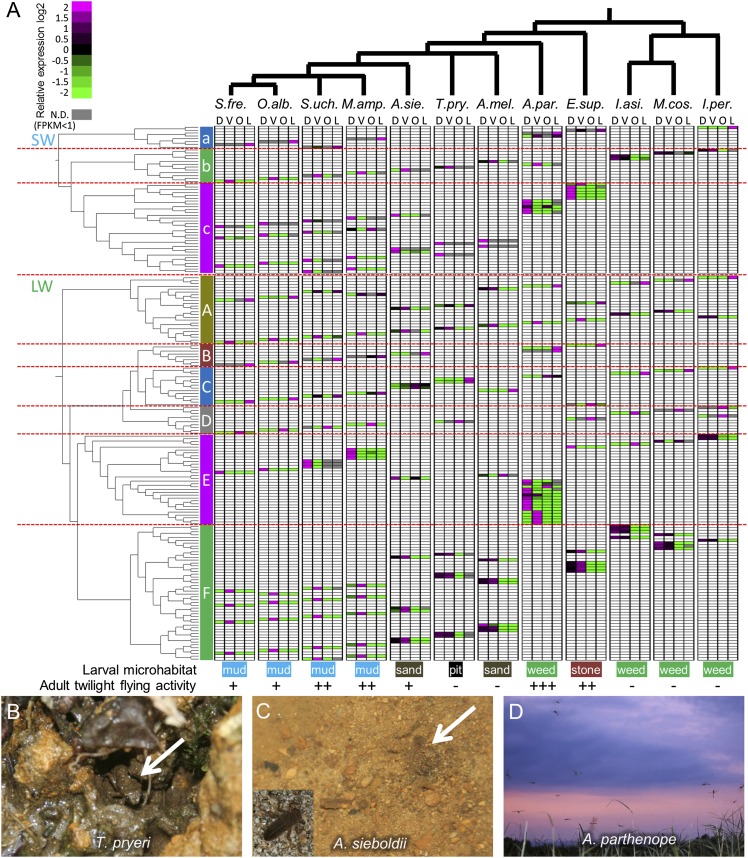Fig. 7.
Expression profiles of opsin genes in diverse dragonflies. (A) Expression levels of visual opsin genes in adult and larval visual organs of 12 dragonfly species. Phylogenetic relationship of the dragonflies is shown on the top: A.mel., Asiagomphus melaenops; A.par., Anax parthenope; A.sie., Anotogaster sieboldii; E.sup., Epiophlebia superstes; I.asi., Ischnura asiatica; I.per., Indolestes peregrinus; M.amp., Macromia amphigena; M.cos., Mnais costalis; O.alb., Orthetrum albistylum; S.fre., Sympetrum frequens; S.uchi., Somatochlora uchidai; T.pry., Tanypteryx pryeri. Molecular phylogeny of SW-type opsin genes is shown on the upper left, where a, b, and c indicate the SW gene groups a, b, and c (see also Fig. S2A). Molecular phylogeny of LW-type opsin genes is shown on the lower left, where A, B, C, D, E, and F indicate the LW gene groups A, B, C, D, E and F (see also Fig. S2B). Gene expression levels are displayed by heat map presentation in connection to the dragonfly phylogeny and the opsin gene phylogenies, in which D, V, O, and L indicate expression levels in dorsal region of adult eyes, ventral region of adult eyes, adult head region containing ocelli, and larval whole head, respectively. In the color spectrum bar (Upper Left), magenta and green indicate positive and negative values relative to the average FPKM per gene per dragonfly species, whereas gray indicates no detectable expression with FPKM < 1. On the bottom, ecological traits for each dragonfly species are indicated according to refs. 40 and 41. For larval microhabitat: mud is crawling, or burrowing in muddy water bottom of open lowland ponds, marsh, rice paddies, or rivers; sand is burrowing in sandy water bottom of mountain streams or small rivers under dense tree cover; pit is digging pits on wet mountain slopes under forest cover; stone is hiding under stones in rocky water bottom of mountain streams under forest cover; and weed is hanging on water plants in open ponds or rivers. For adult twilight flying activity: +++, very active; ++, active; +, moderate; –, not observed. (B) A pit-dwelling larva of T. pryeri (arrow). (C) A bottom-burrowing larva of A. sieboldii (arrow); Inset shows an exposed larva. (D) Adults of A. parthenope in twilight flight.

